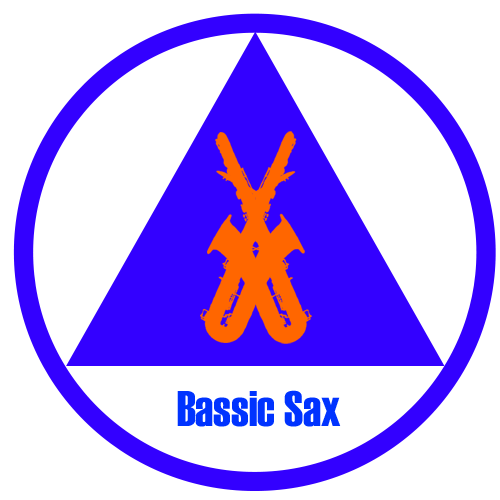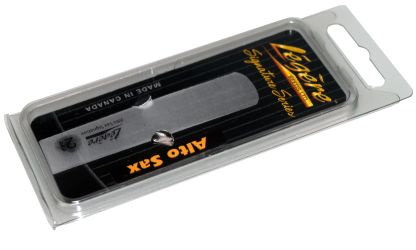Last night I had my first opportunity to use the Légère Signature Series reeds at rehearsal. After ordering them at my local Long & McQuade—the day after my friend Ray introduced me to them—I had to wait a week before the store could get them in stock. I’ve been using them at home now since Monday, but last night had a chance to see what they would do in the electric environment of Deception.
Ever since I started playing the reeds on Monday, I had started to notice some pretty major differences between the Fibracells and the Signature Series Légères. I decided however, to hold off writing about them until I had a chance to play them during our last rehearsal before this weekend’s show.
Our last rehearsal before a show is always a straight run through like the show itself will be. Last night gave me the chance to test my new reeds out in the real world, without the pressure of an audience, should things go sideways.
The first thing I noticed immediately upon slapping the Signature Series on my mouthpiece, is how dark the reed is compared to a good Fibracell. When I say the reed is dark, I’m saying that the reed generates less overtones than the Fibracell, and more of the horn’s main/core tone is present. (Check out this article of the 3 Aspects Of Tone, to find out more about these concepts.) Perhaps this will change when the reed becomes worn in after a while. Perhaps it won’t. I will have to play on these reeds for a while to find out.
Although I personally am not a fan of dark reeds—if I was, I’d have been playing on them all along—the advantage with the Légères is that they give you a fullness in the upper register that the Fibracells don’t give you.
The Fibracells tend to become very thin in the higher end of the horn, and you have to be very aware of your embouchure and throat to ensure that you don’t close off your sound. With the Légères your sound stays full right through the palm keys and into the altissimo.
The altissimo notes of course, speak very clearly with the Signature Series. G1 pops out like a conventional note, and my F#4 is always there as well. No fuss. No muss. I don’t have to worry if I’m going to get my high notes to speak. I remember a time when all cane reeds used to play this way… Ah yes… But digress…
The Légères have the ability to play altissimo so well, that last night I found myself overshooting the note quite a few times. Instead of F#4 for example, I ended up quite a bit higher. Don’t ask me where I ended up. I didn’t have the chance to figure things out, since we were going from song to song without breaks in between.
After about 90 minutes of solid playing, I noticed I wasn’t able to hit my altissimo consistently. It happened during Fishnet when I was going for an A3, and suddenly couldn’t get the note at all. Then I remembered something that Mal-2 mentioned in one of his comments here, and also something that Ray told me upfront about the reeds: Légères get tired, and need to be replaced during a show. The reed still sounded and responded fine over the rest of the range of the horn, but it was in the altissimo range that things went sideways.
So to put things in a nice manageable package, here’s a chart that I’ve compiled from my limited perspective to date, of the Pros and Cons of the Légère Signature Series reeds. As time goes on, I’m sure this list will grow, and one thing or another might drop off. But for now, this is what I’ve noticed.
I’m using the 2¼ tenor reeds on a vintage Dukoff S7, with a Rovner dark lig. The horn is my 1950 307XXX H.N. White King Zephyr.
Légère Signature Series Reeds
Pros |
Cons |
Availability—These reeds are currently in production. |
Darker—More core tone and less overtones present. Although many people would see this a “Pro”. |
Very responsive over the entire range of the horn |
Hard to see the reed tip against silver mouthpieces. |
Long lasting—4 reeds in rotation should last a year. (I’m guessing @ this point.) |
Fussy with regards to ligature placement. If you don’t have the Rovner’s fastening screw placed exactly in the middle, the response is impeded and sound is compromised. |
Can be worked on |
It is easy to overshoot the altissimo note you’re aiming for. I assume in time this will become less of an issue as a person becomes familiar with the reed (?). |
Company has a return program to ensure you get the right strength reed. |
The cost. These reeds cost approx. $25 each… Or about $26.99 in Canada. (Which is pretty funny, since Légère is a Canadian company! WTF?) |
Extremely easy altissimo |
The reeds “fatigue” easily, and need to be exchanged during a performance. I guess that’s what set breaks are for. |
Overall very playable |
The Légère reeds definitely require a different approach than the Fibracells that I’ve used for over a decade. Now that I’ve got a number of hours on them, I feel confident enough playing them that I will use them for Deception’s show on Saturday. Because I’m super cautious though, I will still have a supply of really good Fibracells on hand, just in case things go sideways on me. Just call me paranoid. 😉





I’ve been trying to figure out the marketing strategy on the Signature Series saxophone reeds. The clarinet ones (my review here) seem to be marketed squarely to classical players, so I assumed the saxophone reeds would be, too, with the Studio Cut being aimed at the jazz/rock/other market. And the characteristics you’re describing in the Signature Series reeds do make them sound like good reeds for classical playing–dark tone, strong altissimo, etc.
I’ve wondered about the marketing of these reeds too Bret. On Légère’s website they write:
Huh? :scratch: New players should use the Signature Series? So these (the most expensive of all the Légère reeds) are “starter” reeds? I don’t know about that. That doesn’t seem to make a great deal of sense. The people who are buying them in Vancouver are the jazz and rock, R&B, etc. players. The stores can’t keep them in stock. Because the altissimo speaks so easily on them, and because they are so free blowing, they seem almost effortless compared to many reeds on the market. I guess that’s why the company is suggesting beginners would use them.
It almost seems to me that Légère doesn’t know who to aim them at. They’re waiting for feedback and to see who prefers them, and what style of music they’re being used for, before deciding on who to market them at.
Interestingly enough, I saw 1 Légère Beginners clarinet reed at Long & McQuade. I don’t know what regular Légère reeds cost for clarinet, but this reed was $7 Cdn. I don’t see Beginners clarinet reeds on the Légère site. They certainly don’t sell Beginner saxophone reeds. What’s that about? And what is a beginner’s reed anyway?
I wouldn’t call that paranoia I would call it being prepared plan for the worst you can think of and when it doesn’t happen then you can be happily surprised. If you or worrying yourself sick over something you can’t do any thing about then your :beat: and should let it go.
Mark